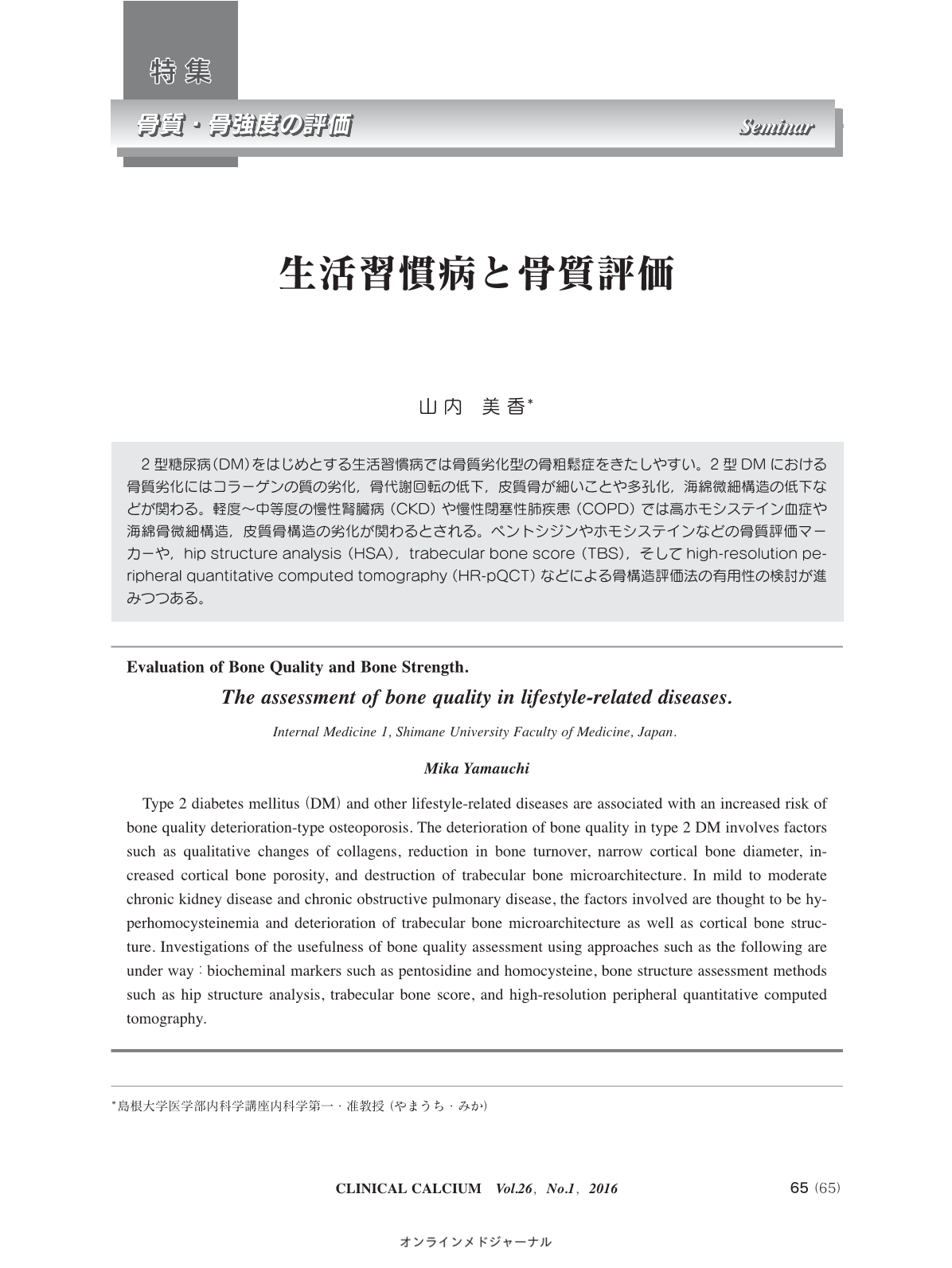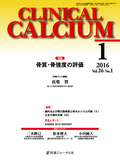Japanese
English
- 有料閲覧
- Abstract 文献概要
- 1ページ目 Look Inside
- 参考文献 Reference
2型糖尿病(DM)をはじめとする生活習慣病では骨質劣化型の骨粗鬆症をきたしやすい。2型DMにおける骨質劣化にはコラーゲンの質の劣化,骨代謝回転の低下,皮質骨が細いことや多孔化,海綿微細構造の低下などが関わる。軽度~中等度の慢性腎臓病(CKD)や慢性閉塞性肺疾患(COPD)では高ホモシステイン血症や海綿骨微細構造,皮質骨構造の劣化が関わるとされる。ペントシジンやホモシステインなどの骨質評価マーカーや,hip structure analysis(HSA),trabecular bone score(TBS),そしてhigh-resolution peripheral quantitative computed tomography(HR-pQCT)などによる骨構造評価法の有用性の検討が進みつつある。
Type 2 diabetes mellitus(DM)and other lifestyle-related diseases are associated with an increased risk of bone quality deterioration-type osteoporosis. The deterioration of bone quality in type 2 DM involves factors such as qualitative changes of collagens, reduction in bone turnover, narrow cortical bone diameter, increased cortical bone porosity, and destruction of trabecular bone microarchitecture. In mild to moderate chronic kidney disease and chronic obstructive pulmonary disease, the factors involved are thought to be hyperhomocysteinemia and deterioration of trabecular bone microarchitecture as well as cortical bone structure. Investigations of the usefulness of bone quality assessment using approaches such as the following are under way:biocheminal markers such as pentosidine and homocysteine, bone structure assessment methods such as hip structure analysis, trabecular bone score, and high-resolution peripheral quantitative computed tomography.



